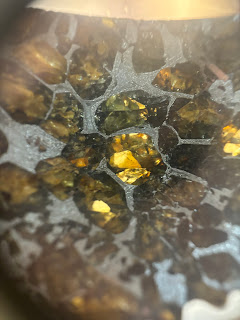Asteroids. Meteors. Meteorites.
I look up into the night-sky and stare into complete darkness. I gaze into this pool of nothingness, yet, I feel everything. Suddenly, I see significant light turn the sky a pretty pinkish-red color. For a moment, everything seems beautiful-almost like all the ugliness in the world has disappeared and wonderland's all around me- or at least this is what I imagine a meteor sighting to be.
One of the most intriguing things I've ever learnt about our universe is how certain objects strike our skies and bathe them in beautiful colors providing us with nothing but joy and ecstasy. Imagine travelling over huge distances- surviving the heat and the cold, dodging through the massive planets of our solar system, making it through our atmosphere and crashing on our land. Now imagine a simple piece having different compositions of metals and minerals doing it. That rock-rather a meteorite- may even have a chance at wiping out the entire human population, if it gets too close. It is for this very reason that hearing people talk about them fills me with mixed emotions-
"Oh, I want to see a meteor" I think one moment.
But, the next I think : "What if it gets too close and you end up witnessing the death of human-kind?"
In my opinion, these rocks are the most scary, but, the most fascinating objects of study.
We observe World Asteroid Day each year on the 30th of June, so that scientists all around the world can research, and ponder about near earth objects(Asteroids when they travel in outer-space; Meteors when they enter the Earth's atmosphere and Meteorites when they finally crash on the Earth's surface). It raises awareness about their potential dangers and aims at dedicating a day to finding measures to mitigate it.
The Nehru Science Centre, located in Mumbai, recently held an exhibition on Asteroids and I was privileged enough to have a look at real pieces of real meteorites which crashed into some place or other, and, let me tell you, it truly was astounding. Apart from these I even got to see small microscopic fragments of the moons surface.(and boy wasn't that a party!)
The first one I saw was rather bewildering! Tons and tons of it's remains were found in the mountains of Sikhote-Alin, Russia in 1947. Most of them were found in the form of shrapnels- strewn over an area of 20 to 40 square kilometres-which tell us that the meteorite exploded at the time it entered our atmosphere. The Sikhote-Alin meteorite is classified as an iron meteorite- and these are usually very dense. This explains why this particular piece- weighed a whopping 4-5 kilograms even though it gave the look of a rock with lesser mass.
Among the other interesting ones, I also came across pieces of a Pallasite Meteorite! These were indeed the epitome of beauty! Pallasites are said to have originated from the core of many asteroids or planets which may have shattered or destroyed in space due to impact). They have large olivine incorporations of peridot quality throughout their iron-nickel matrix. When you shine light through these inclusions and look at it through a magnifying glass- it is indeed a treat to your eyes.
I was also greatly intrigued by the "Libyan Glass" meteorite pieces which were discovered in Libya (as the name suggests). The story of their origin is rather extra-ordinary! When a meteorite hit a desert in Libya, pieces of it went up into the air along with the sand from the landscape. The high temperatures caused due to the meteor crash led to the fusion of these sand particles with the meteorite particles and hence, the Libyan glass pieces came into existence.
Another meteorite piece which I found rather interesting was the one from the asteroid belt- most probably asteroid Vesta. Certain components of this particular piece were florescent and shined brightly under Ultra-Violet light!(the fragments glowing bright pink)
There were a lot of other interesting meteorite pieces and I felt extremely lucky to see them all physically. The very thought of seeing, standing next to and feeling something which had been through so many processes and so many different regions in outer-space was marveling, to say the least. Getting to know more about their origin and their "stories" was such a great opportunity for me to expand my horizons and learn something new!









Awesome stuff Sachi - A budding cosmologist !
ReplyDeleteWish you the best and the cliche aptly applies to you - Reach for the stars!!